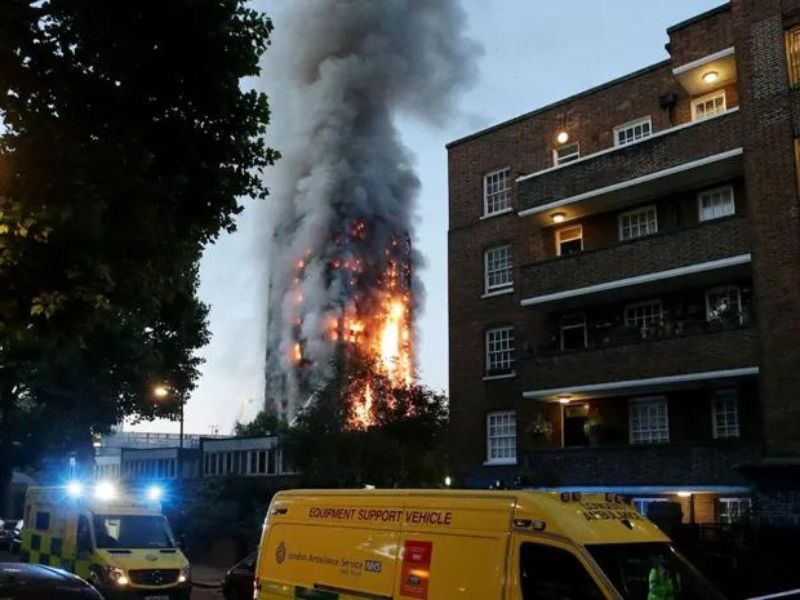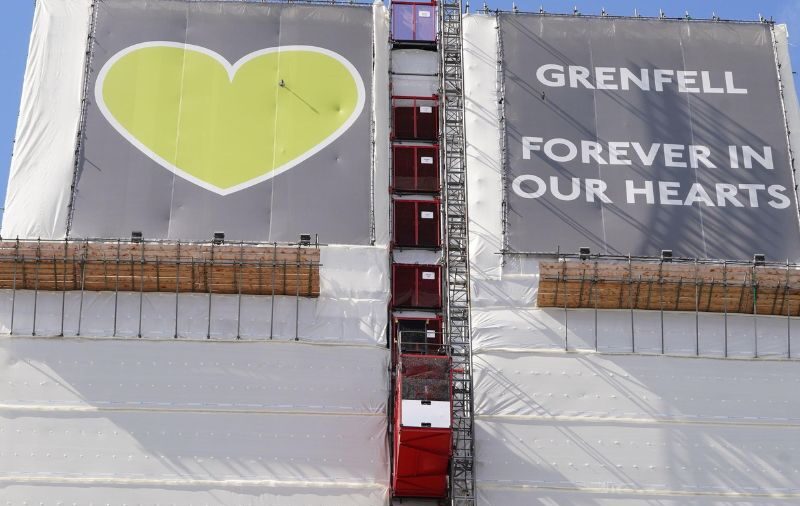Table of Contents
ToggleGrenfell’s Path to Disaster: How a Chain of Failures and ‘Systematic Dishonesty’ Led to 72 Deaths
The Grenfell Tower fire of 2017, a catastrophe that claimed 72 lives, stands as one of the foremost obliterating occasions in later British history. The fire that tore through the 24-story tower in West London not as it were uncovered serious blemishes in building security but also uncovered an upsetting web of disappointments, untruthfulness, and neglect that traversed decades. The ultimate report of the six-year open request into the fiasco has presently uncovered the grim reality of how these components combined to form a way to catastrophe.
A Path to Disaster Stretching Back Decades

The inquiry’s 1,700-page report paints a condemning picture of how fire security in high-rise buildings has been overseen and directed in Britain and Grains. The roots of the Grenfell catastrophe can be traced back to the early 1990s, a period when progressive governments started to appear concerning neglect of the security of high-rise private buildings. Concerns were over and over raised around the security of building homes, however, these notices were frequently disregarded, deferred, or through neglected by amalgamation and Preservationist governments.
The report highlights that this impassion was not restricted to the government alone. It amplified to the nearby committee, the Inhabitant Administration Association (TMO) dependable for Grenfell Tower, and a few companies included in the building’s restoration. Together, these substances fizzled to prioritize the security of inhabitants, especially the helpless, and instep contributed to a perilously inadequate framework.
Systematic Dishonesty: The Role of Manufacturers

One of the foremost stunning disclosures from the request is the “efficient untruthfulness” of the producers included in the refurbishment of Grenfell Tower. The tower was clad in combustible materials amid a sad refurbishment in 2016, which played a noteworthy part in the fire’s fast spread. The cladding, made of exceedingly combustible polyethylene, was fabricated by the US firm Arconic. The request found that Arconic intentionally concealed the genuine degree of the fire dangers related to its Reynobond 55 cladding, which specialists distinguished as the “biggest contributor” to the fire’s escalated.
Producers of the separator utilized within the restoration too made “untrue and deluding claims” about the security and reasonableness of their items. This misdirection drove to the establishment of materials that were entirely unseemly and perilous for utilization on a private high-rise building.
Failures in Fire Service Strategy and Training
The London Fire Brigade (LFB) moreover came under investigation within the report for its reaction to the Grenfell fire. The inquiry found critical disappointments within the brigade’s preparation and a dazzling need for a coherent technique to clear the building. The “stay put” approach, which prompted inhabitants to stay in their pads, demonstrated disastrous as the fire rapidly inundated the building’s cladding. By the time the blazes came to the upper floors, numerous inhabitants were now dead or oblivious due to the inward breath of harmful gasses like carbon monoxide.
The report also criticizes the fire brigade for its insufficient planning and need of possibly arrange for such a large-scale fire. These disappointments compounded the catastrophe, taking off inhabitants with a small chance of survival once the fire took hold.
Missed Opportunities for Action
The inquiry’s discoveries uncover that various openings to avoid such a calamity were missed over the long time. Progressive governments fizzled to act on warnings and permitted a culture of complacency to require root. The neighborhood chamber and the TMO showed a diligent impassion to fire security, especially the security of powerless inhabitants, which eventually contributed to the catastrophe.
The report’s proposals call for clearing changes in how building safety is overseen in Britain and Grains. Among these are the presentation of a single construction controller, the foundation of a College of Fire and Protect to progress firefighter preparation, and changes to the way materials are tried for fire security. These suggestions point to anticipate another catastrophe like Grenfell from ever happening once more.
A Tragic Legacy and the Pursuit of Justice

As the country reflects on the discoveries of the Grenfell Tower request, the hunt for equity proceeds. The request has given a clear account of how a combination of inadequacy, untrustworthiness, and systemic disappointment led to the passing of 72 guiltless individuals. Be that as it may, the ultimate choices on potential criminal charges will not be made until the police and prosecutors total their examination, which is anticipated by the conclusion of 2026.
In Parliament, Sir Keir Starmer issued an expression of remorse for the sake of the British state, recognizing that those affected by the catastrophe were “let down exceptionally gravely sometime recently, amid, and within the consequence of the catastrophe.” This affirmation, whereas critical, is as it were the starting of a long journey toward responsibility and alteration.
The Grenfell Tower fire will until the end of time remain a stark update of the disastrous results that can result from disregard, untruthfulness, and disappointment in prioritizing security. The lessons learned from this catastrophe must drive pressing changes to guarantee that such a calamity never happens once more. The way to fiasco at Grenfell was cleared with a long time of systemic disappointments, but the way forward must be one of responsibility, equity, and a reestablished commitment to the security of all citizens.
Also Read:
FAQs:
1. What caused the Grenfell Tower fire to spread so quickly?
The fire spread quickly due to the cladding on the building, which was made of profoundly combustible materials. The request found that this cladding, at the side of other components, essentially contributed to the catastrophe.
2. Who is held responsible for the Grenfell Tower fire?
The request pointed to a chain of disappointments including government bodies, producers, and the neighborhood chamber, all of whom were found to have played a part due to carelessness, inadequacy, and untruthfulness.
3. What changes are recommended following the Grenfell Tower fire inquiry?
The request suggested presenting a single development controller, moving forward with firefighter preparing through a College of Fire and Protect, and changing how building materials are tried for fire security.

